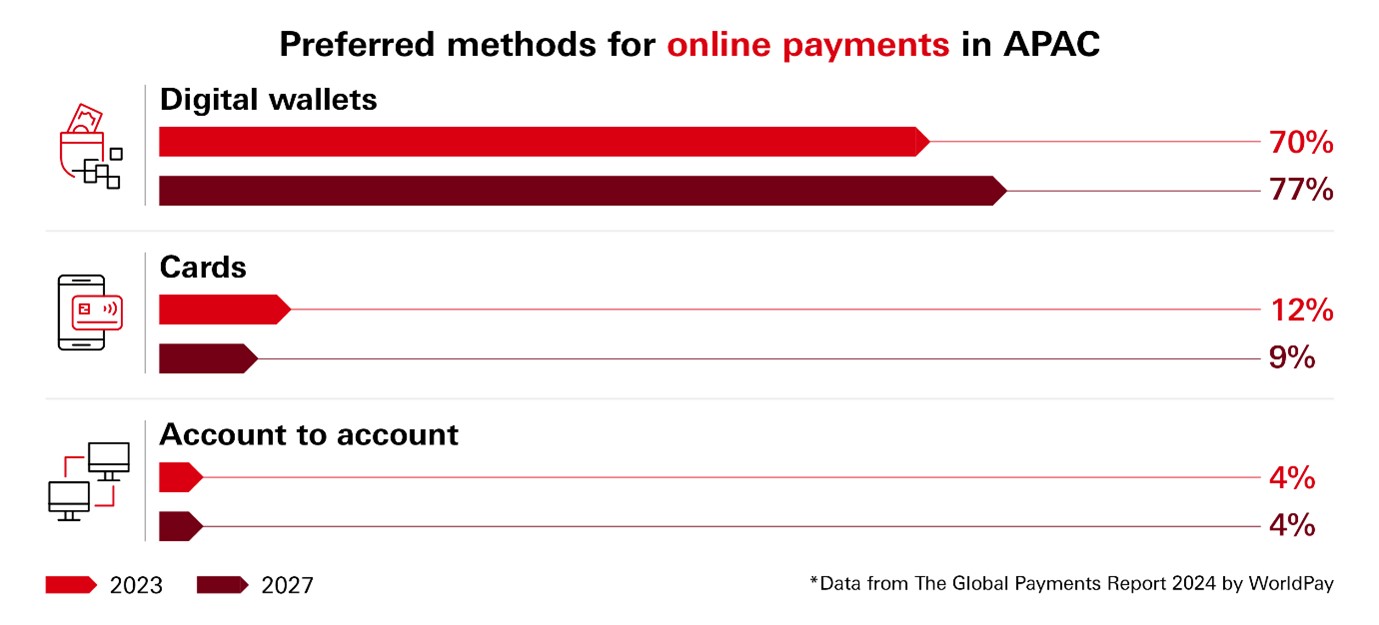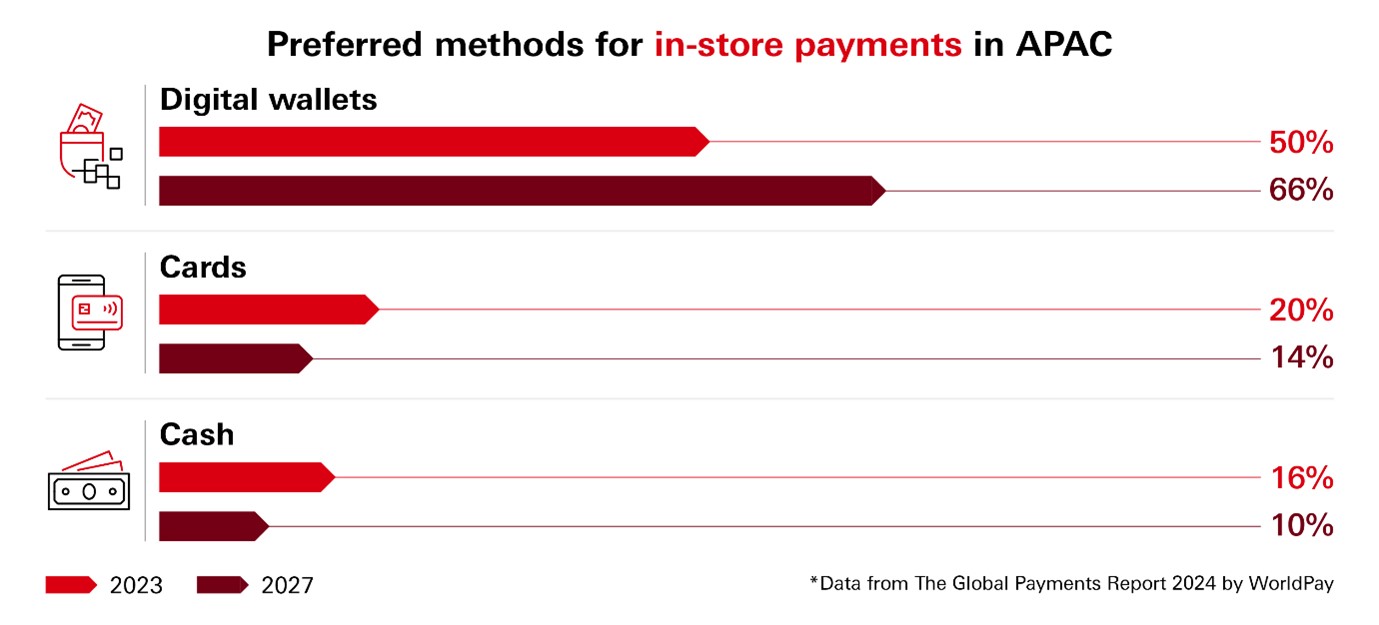- Article

- Innovation & Transformation
- Digital transformation
Meeting customer expectations in the era of digital commerce
While it’s well known that the digital transformation of commerce is happening at pace, adapting to the implications is easier said than done. In this article, we pinpoint practices that companies should consider when digitising and looking for an edge in their customer experience.
With global e-commerce transaction value expected to reach US$8.8 trillion by 2027 and Asia accounting for US$4.4 trillion1, the importance of a robust digital commerce strategy is only set to grow.
Making it easy for customers to say “yes”
Today’s customers are more connected and discerning than ever before. To gain their loyalty, businesses need to provide a customer experience that leaves a distinct impression.
From the first click through to check out and refunds, delivering an engaging customer experience is critical for recurring sales and should be at the heart of any digital commerce growth strategy.
|
Technology plays a central role because what constitutes customer satisfaction has everything to do with how consistent a business is across channels, how accommodative its checkout experience is, and how personal it makes the customer journey through the data it captures.
Artificial intelligence (AI) and machine learning, two critical technologies that deliver data analytics for an improved customer experience, have become an indispensable part of how companies achieve this.
Together, they are driving the trend of personalisation in digital commerce. Businesses are adopting chatbot technology to offer customised product recommendations that convert and build brand affinity, as well as provide “always on” after sales support that meets customers’ needs in real-time.
AI is a major turning point for digital commerce. It’s enabling brands to scale more efficiently, while maintaining human-like customer support and very strategic approach to customer engagement.
|
Building the right business model
There are many ways a business can go digital, from restaurants using QR codes to access menus and complete orders all the way to luxury car brands offering a consistent online-offline showroom experience.
The decision to adopt a given model should be underpinned by data-driven customer intelligence that continues to evolve as digital channels are used. Insights into how customer behaviour and preferences are evolving are the linchpin for staying ahead of the customer experience curve.
Because business is now faster, more convenient, and more personalised, customers expect a heightened omnichannel experience that follows them consistently from brand awareness to sales to after sales support.
In addition, offline touchpoints can now be imbued with digital elements that deliver added value. For example, digital kiosks are bringing online convenience to the experience of shopping in store.
Conversely, live shopping – where online customers can view a livestream of product presentations and make purchases in real-time – is bringing something of the in-store experience to a digital sales channel.
The future of digital commerce is all about responding to changing consumer behaviours, adapting with the right technology and putting a premium on convenience. Our role as a bank is to ensure our customers have the support they need in this transition – from real-time payments to APIs to so much more.
|
Defining the role payments play in the digital transformation journey
The shift away from cash is clear and businesses need to consider how best to accommodate the evolving preferences of their customers. Furthermore, payments are now enabling a core segment of the digital experience via QR codes, real-time payments and e-wallets, with data analytics provided to sellers to deliver a more personalised experience.
For our part at HSBC, we are seeing this in the demand among corporates for solutions such as Omni Collect, which helps them offer a wide range of popular payment options to their customers – regardless of whether they are in-store or online.
Getting the payment experience right means customers can access the goods and services they want from wherever they are, using the payment methods and currencies they prefer. While for businesses, they gain greater customer reach, enriched data for better personalisation and a more streamlined international business experience.
It’s essential to understand the trends around online payments. Just in the last few years, there have been so many new providers offering innovative capabilities, which is great but businesses also need to align these to their customers’ needs and expectations.
|
Looking ahead, when it comes to digitisation there is a need to move from incremental change to a fundamental reimagination of how business happens across all channels. The technology and infrastructure are available to do this, but how businesses think about the customer experience also needs to evolve if they are to take full advantage of evolving consumer behaviours.

- WorldPay, The Global Payments Report 2024, https://worldpay.globalpaymentsreport.com/en
The information contained on this website is provided for informational purposes only, and does not constitute an offer to sell or the solicitation of an offer to buy any products referenced. Eligibility criteria and T&Cs apply for the products referenced. Local country restrictions and limits may apply. Please speak with your HSBC representative for more information.

Pursuing the real-time treasury opportunity

Why reliable data can be an opportunity for businesses






